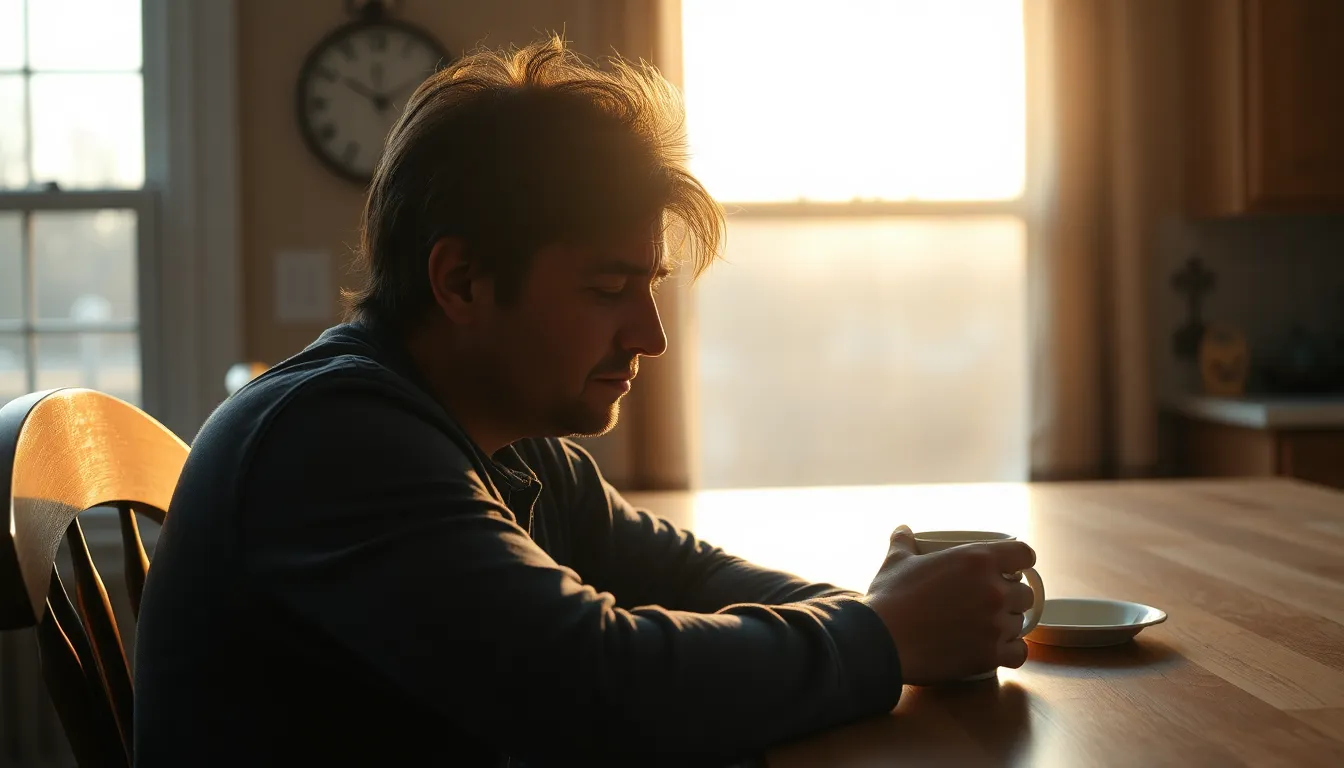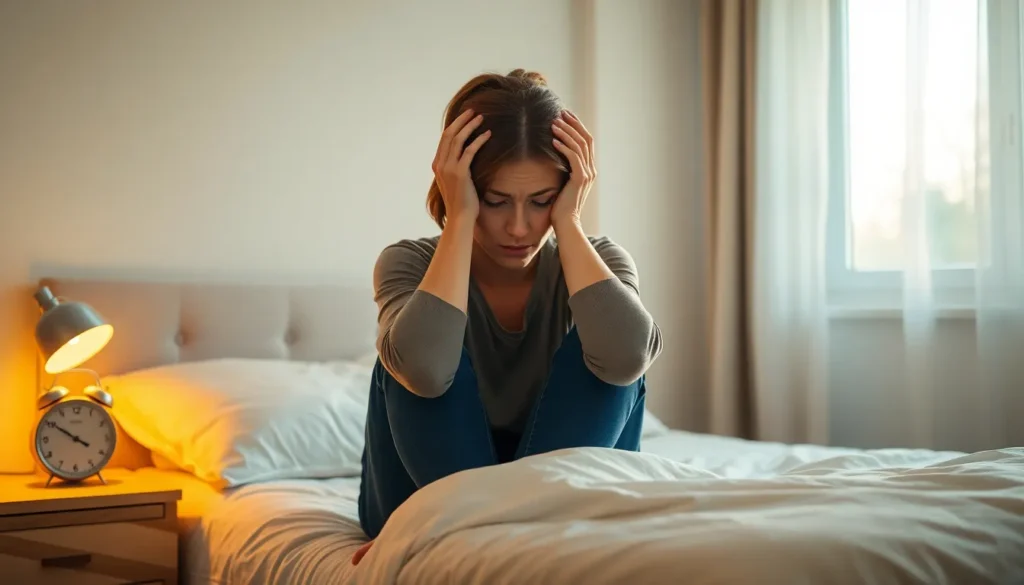As the clocks spring forward and fall back, many people experience the annual ritual of daylight saving time. While this shift promises longer evenings or brighter mornings, it often comes with a hidden cost: disrupted sleep patterns. The transition can throw off circadian rhythms, leaving individuals feeling groggy and out of sync.
Understanding the impact of daylight saving time on sleep is crucial, especially for those who struggle with insomnia or other sleep disorders. This article explores how these time changes affect our bodies and offers practical tips for adjusting sleep schedules. With a few simple strategies, anyone can minimize the negative effects and enjoy a smoother transition.
Table of Contents
ToggleUnderstanding Daylight Savings Sleep
Daylight Savings Time (DST) impacts sleep patterns by shifting the clock, altering the natural circadian rhythm. This alteration can disrupt rest and affect overall well-being.
What Is Daylight Savings Time?
Daylight Savings Time involves advancing clocks by one hour during warmer months to maximize evening daylight. The transition typically occurs in spring and reverts in fall. DST aims to reduce energy usage and extend daylight for outdoor activities. However, this clock adjustment can interfere with sleep, causing disturbances in sleep quality.
The Science Behind Sleep Cycles
Sleep cycles consist of various stages, including REM and non-REM sleep. These stages typically follow a consistent pattern, taking about 90 minutes to complete. Daylight Savings disrupts this rhythm, leading to sleep deprivation. Research shows that people lose sleep during the spring transition, resulting in increased grogginess and cognitive impairments. The biological clock struggles to recalibrate, affecting hormone production, particularly melatonin, which regulates sleep. Understanding these cycles helps individuals adapt more effectively to time changes.
Effects of Daylight Savings on Sleep

Daylight saving time (DST) significantly influences sleep patterns. The transition to DST can disrupt natural circadian rhythms, impacting both sleep quality and cognitive function.
Short-Term Effects
Short-term effects of DST manifest immediately after clock adjustments. Individuals may experience insomnia, fatigue, and decreased alertness. Studies indicate a 20% increase in sleep-related issues during the week following the time change. Some may find it challenging to adapt to the new schedule, leading to daytime drowsiness and decreased productivity. Additionally, accidents and injuries may rise, with a reported 25% increase in traffic incidents in the days following spring DST.
Long-Term Implications
Long-term implications of DST can accumulate over time. Chronic disruptions to sleep patterns may lead to persistent sleep deprivation. Research reveals that prolonged poor sleep quality can contribute to various health issues, including cardiovascular diseases, obesity, and diabetes. Furthermore, individuals with pre-existing sleep disorders may find their conditions exacerbated, resulting in a prolonged struggle with sleep maintenance. Adaptation to DST can take weeks, making it important for individuals to adjust their sleep routines gradually to mitigate these effects.
Strategies for Adjusting to Daylight Savings Sleep
Adjusting to daylight saving time (DST) requires careful planning. Proper preparation and strategic tips can ease the transition and minimize sleep disruptions.
Preparing in Advance
Adjusting sleep schedules a few days before DST proves beneficial. Gradually shift bedtimes by 15-30 minutes earlier each night. Allowing for this incremental change helps recalibrate the body’s internal clock. Dimming lights in the evening can simulate nighttime and promote melatonin production. Additionally, reducing caffeine intake in the days leading up to the time change aids in better sleep quality.
Tips for a Smooth Transition
Implement targeted strategies to ensure a seamless transition during DST:
- Maintain a Consistent Sleep Schedule: Going to bed and waking up at the same time every day stabilizes circadian rhythms.
- Create a Relaxing Bedtime Routine: Engaging in calming activities before bed, such as reading or listening to soft music, helps signal the body to wind down.
- Control Light Exposure: Getting morning sunlight boosts alertness and improves mood, while minimizing exposure to blue light in the evening promotes better sleep.
- Limit Naps: Restricting daytime naps to 20-30 minutes prevents further disruption to nighttime sleep patterns.
- Stay Active: Regular physical activity during the day facilitates deeper sleep at night, reducing feelings of fatigue.
- Monitor Sleep Environment: Ensuring a dark, cool, and quiet bedroom enhances sleep quality and promotes restfulness.
By following these strategies, individuals can experience a more manageable adjustment to daylight savings sleep changes.
Health Considerations
Daylight saving time (DST) affects various health aspects, particularly sleep and mental well-being. Understanding these health considerations helps individuals recognize potential risks.
Sleep Disorders and Daylight Savings
Sleep disorders often worsen during the transition to DST. Studies show that individuals with insomnia may experience heightened difficulties in falling or staying asleep after the time change. The abrupt shift disrupts established sleep patterns, which can exacerbate symptoms of sleep apnea and restless leg syndrome. Professionals recommend gradual adjustments in sleep schedules to lessen the adverse effects. Additionally, incorporating relaxation techniques can aid in improving sleep quality during this transitional period.
Impact on Mental Health
DST transitions also impact mental health. Research indicates that the time change correlates with mood disturbances and increased irritability. Some studies highlight a 30% rise in depressive symptoms among individuals sensitive to sleep modifications. Disrupted sleep can impair cognitive functions, leading to difficulties in concentration and heightened anxiety levels. Best practices for maintaining mental wellness include prioritizing sleep hygiene, engaging in physical activity, and fostering healthy social connections.
Daylight saving time presents unique challenges to sleep health and overall well-being. The disruption of circadian rhythms can lead to various sleep-related issues that affect daily life. By understanding these impacts and implementing practical strategies for adjustment, individuals can better navigate the transition. Prioritizing sleep hygiene and making gradual changes to sleep routines can significantly mitigate the negative effects associated with DST. As awareness of these challenges grows, so does the potential for healthier sleep patterns and improved mental wellness during this time of year.



